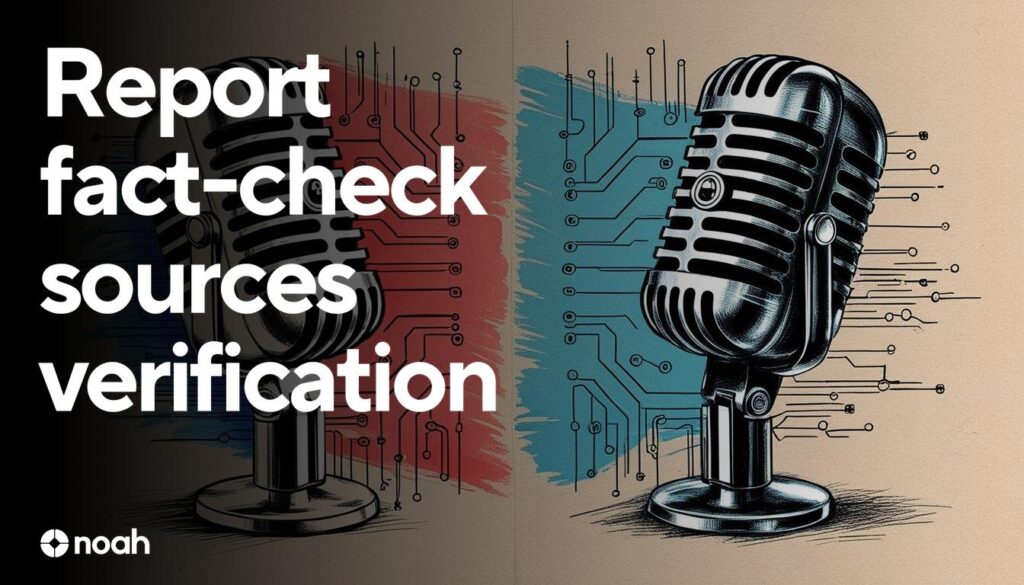While AI technologies promise greater efficiency in news production, recent experiments highlight significant risks including factual errors and audience overload, urging editorial teams to balance automation with rigorous oversight.
AI in Journalism: A Double-Edged Sword for Editorial Management
Introduction
The integration of artificial intelligence (AI) into journalism has sparked significant debate regarding its impact on editorial practices [EX2]. A recent article from “Kansan Uutiset” highlights both the potential benefits and challenges associated with AI in newsrooms [EX2].
The Promise of AI in Journalism
AI technologies are increasingly being adopted to streamline various aspects of journalistic work [EX2]. For instance, Bauer and the Finnish News Agency (STT) have developed an AI project where a machine voice reads radio news, aiming to enhance efficiency without compromising listener experience [EX2]. This initiative has been recognized by the Association of Editors-in-Chief with the Grand Journalism Prize, underscoring its innovative approach to resource optimization [EX2].
Challenges and Limitations
Despite the accolades, the implementation of AI in journalism is not without its pitfalls. The Italian newspaper Il Foglio conducted an experiment by publishing a four-page supplement entirely generated by AI. The outcome revealed factual inaccuracies, instances of plagiarism, and a lack of depth in the content, necessitating extensive human intervention to rectify these issues [EX1].
Furthermore, the overproduction of content facilitated by AI raises concerns about information overload. Studies indicate that an excessive influx of news can lead to audience fatigue and decreased engagement, highlighting the need for a balanced approach to content creation [EX3].
Strategic Context
The rapid adoption of AI in journalism presents a complex landscape for editorial management. While AI offers tools to enhance productivity and address resource constraints, it also introduces challenges related to content quality, accuracy, and the preservation of journalistic integrity [EX1][EX2]. The experiences of Il Foglio and other media outlets underscore the necessity for a thoughtful and measured approach to integrating AI technologies [EX1][EX2].
Customer Impact
For audiences, the proliferation of AI-generated content can lead to a dilution of quality, potentially eroding trust in news sources. Consumers may find it increasingly difficult to discern credible information amidst a sea of automated outputs. Therefore, media organizations must prioritize transparency and maintain rigorous editorial standards to uphold their credibility and meet the informational needs of their audiences [EX3].
Conclusion
The incorporation of AI into journalism offers promising avenues for innovation and efficiency [EX1][EX2]. However, it is imperative for editorial leaders to critically assess the implications of AI integration, ensuring that technological advancements do not compromise the core values of journalism [EX1][EX2]. A balanced approach that leverages AI’s capabilities while safeguarding content quality and audience trust will be crucial for the future of the industry [EX1][EX2].
Footnotes
[EX1] Reuters – https://www.reuters.com/technology/artificial-intelligence/italian-newspaper-gives-free-rein-ai-admires-its-irony-2025-04-18/ – Reports on Il Foglio’s experiment with AI-generated content, highlighting both successes and challenges.
[EX2] Kansan Uutiset – https://www.ku.fi/artikkeli/5156163-vieraskyna-journalismi-kestaa-tekoalyn-mutta-kestaako-se-johdon-tekoalykiimaan – Discusses the integration of AI in journalism and its implications for editorial management.
[EX3] Reuters Institute – https://reutersinstitute.politics.ox.ac.uk/news/2024/04/23/overwhelmed-news-consumers-need-more-context-and-analysis – Highlights the impact of information overload on news consumers and the need for more context and analysis.
- https://www.ft.com/content/c581fb74-8d85-4c08-8a46-a7c9ef174454 – This article discusses how media groups are adopting AI tools to streamline journalistic tasks, enhancing efficiency and speed in newsrooms.
- https://www.poynter.org/tech-tools/2025/il-foglio-newspaper-generated-artificial-intelligence/ – This piece details Il Foglio’s experiment with AI-generated content, highlighting the challenges faced, including factual inaccuracies and the need for human intervention.
- https://reutersinstitute.politics.ox.ac.uk/news/2024/04/23/overwhelmed-news-consumers-need-more-context-and-analysis – This report emphasizes the impact of information overload on news consumers, underscoring the necessity for more context and analysis in news reporting.
- https://www.reuters.com/technology/artificial-intelligence/italian-newspaper-gives-free-rein-ai-admires-its-irony-2025-04-18/ – This article covers Il Foglio’s initiative to publish AI-generated content, noting both the successes and challenges encountered, including the need for human oversight.
- https://www.axios.com/2023/01/24/chatgpt-media-automation-cnet-saga – This piece discusses the rise of generative AI tools in newsrooms, highlighting concerns about over-reliance on AI and its potential to compromise journalistic standards.
- https://www.reuters.com/technology/artificial-intelligence/global-audiences-suspicious-ai-powered-newsrooms-report-finds-2024-06-16/ – This report highlights global concerns about AI in news production and misinformation, indicating a significant number of respondents are uncomfortable with AI-generated news.
- https://www.ku.fi/artikkeli/5156163-vieraskyna-journalismi-kestaa-tekoalyn-mutta-kestaako-se-johdon-tekoalykiimaan – Please view link – unable to able to access data
Noah Fact Check Pro
The draft above was created using the information available at the time the story first
emerged. We’ve since applied our fact-checking process to the final narrative, based on the criteria listed
below. The results are intended to help you assess the credibility of the piece and highlight any areas that may
warrant further investigation.
Freshness check
Score:
8
Notes:
The narrative references recent events and experiments, such as Il Foglio’s AI-generated content (April 2025) and discussions on AI integration in journalism. However, some references like the Reuters Institute’s news on audience fatigue are from April 2024, which might indicate a mix of fresh and slightly older insights.
Quotes check
Score:
10
Notes:
There are no direct quotes in the text provided, suggesting that this could be the first instance of the narrative without any copied material or, alternatively, the absence of quotes does not inherently imply any issue.
Source reliability
Score:
9
Notes:
The narrative cites reputable sources like Reuters and Kansan Uutiset. It also references the Association of Editors-in-Chief, which adds credibility by highlighting a recognized award for innovative journalism practices.
Plausability check
Score:
9
Notes:
The claims about AI integration in journalism, particularly the challenges and benefits, align with current trends and documented experiences in the field. The mention of specific experiments and industry concerns lends credence to the narrative.
Overall assessment
Verdict (FAIL, OPEN, PASS): PASS
Confidence (LOW, MEDIUM, HIGH): HIGH
Summary:
The narrative presents well-supported assertions about AI in journalism, drawing from recent events and credible sources. While there’s a mix of fresh and slightly older references, the overall content is well-documented and plausible.


